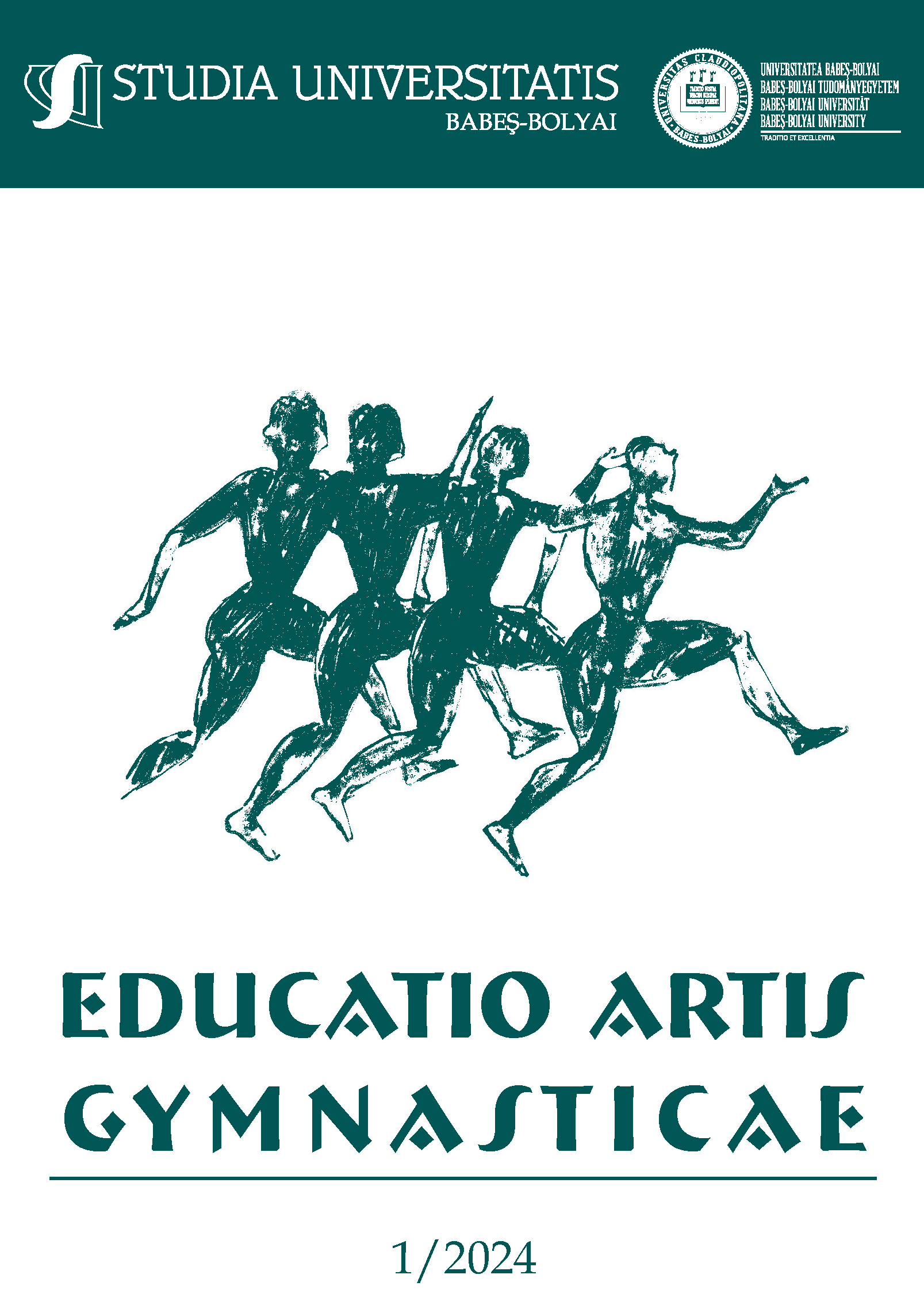RELIGION, POLITICS AND MYSTICISM IN ANCIENT SPORT
DOI:
https://doi.org/10.24193/subbeag.69(1).07Keywords:
Hylozoism, anthropological, animism, secular ritual, sacred ritual, oracle, Delphi, ecotheology, sumo, kyudoAbstract
The history of ancient sports shows us that sports practice was not a secular one but was closely linked to religious faith. Whether we are talking about ancient Greece (Athens, Sparta, etc.), whether we are talking about Latin America or the Far East, the presence of homage and respect towards the gods is seen as something sacred and no one could dispute it. We have researched the religious phenomenon in sports for more than 30 years, and the result is like religion. politics and the arts of war decided the history of the world and civilization. (Barbos, 2015). It is proven by ancient writings, but also by archaeological traces, from ancient temples and stadiums dedicated to gods and legendary heroes, such as Hercules, the most famous demigod of the ancient world, who remained in legends as one of those who achieved the most successful sports. This article summarizes some ancient sports competitions, which were strictly related to the respect for the gods, which was rewarded with sports games, such as the Olympic Games of Greece.
Religia, politica si mistica in sportul antic. Istoria sporturilor antice ne arată că practica sportivă nu era una laică, ci era strâns legată de credința religioasă. Fie că vorbim de Grecia antică (Atena, Sparta etc.), fie că vorbim de America Latină sau Orientul Îndepărtat, prezența omagiului și a respectului față de zei este văzută ca ceva sacru și nimeni nu l-ar putea contesta. Este dovedit de scrierile antice, dar și de urmele arheologice, din templele și stadioanele antice dedicate zeilor și eroilor legendari, precum Hercule, cel mai faimos semizeu al lumii antice, care a rămas în legende ca unul dintre cei care au realizat cele mai multe. sporturi de succes. Acest articol rezumă câteva competiții sportive antice, care erau strict legate de respectul față de zei, care era recompensat cu jocuri sportive, precum Jocurile Olimpice din Grecia. Politica-religia si artele războiului erau inseparabile in toată istoria omenirii, au influențat și practica educației fizice, cat si a sportului.
Cuvinte-cheie: hilozoism, antropologic, animism, ritual secular, ritual sacru, oracol, Delphi, ecoteologie, sumo, kyudo.
Received 2024 February 08; Revised 2024 April 18; Accepted 2024 April 19;
Available online 2024 May 10; Available print 2024 June 30.
References
Barboș, I. P. (2015). Artele marțiale și societățile asiatice. Cluj-Napoca, Risoprint.
Bowen, J. R. (2002). Religions in Practice: An Approach to the Anthropology of Religion. Boston, 2 Ed. Boston.
Brückner, H (1995). Fürstliche Fest: Text und Rituale der Tuḷu-Volksreligion an der Westküste Südindiens. Wiesbaden: Harrassowitz.
Coe, M. D. (1989). The Hero Twins: Myth and Image. In Barbara Kerr; Justin Kerr (eds.). The Maya Vase Book: A Corpus of Rollout Photographs of Maya Vases. Vol. 1. Justin Kerr (illus.). New York: Kerr Associates. pp. 161–184.
Durant, J., & Bettman O. (1952). Pictorial History of American Sports. Cranbury, N.J.
Guttman, A. (1978). From Ritual to Record: The Nature of Modern Sports. Published by: Columbia University Press.
Lawrence, B. M. (1982). Explaining Organizational Behavior. San Francisco: Jossey-Bass.
Onuma, H., & DeProspero, J. (1985). Kyudo – l'essence et la pratique du tir à l'arc japonais. Budo Éditions, Noisy-sur-École.
Peters, E., (1988). Inquisition. Berkeley and Los Angeles, CA: University of California Press. ISBN 0-520-06630-8.
Sanktjohanser, F., (2016). In der Schlucht der Leichtfüßigen. In: Süddeutsche Zeitung, 24. November 2016.
Schele, L., & Miller, M., E., (1986). The Blood of Kings: Dynasty and Ritual in Maya Art. Forth Worth, Tex., and New York.
Travel Europa (n.d.) Jocurile Nemeene, Corint. https://www.traveleuropa.ro/obiective-turistice-corint-jocurile-nemeene/.
Tedlock, D., (1985). Popol Vuh: the Definitive Edition of the Maya Book of the Dawn of Life and the Glories of Gods and Kings. New York: Simon and Schuster. ISBN 0-671-45241-X.
Zhang, P., (2002). Determining Xia–Shang–Zhou Chronology through Astronomical Records in Historical Texts. Journal of East Asian Archaeology, 4: 335–357.
Downloads
Published
How to Cite
Issue
Section
License
Copyright (c) 2024 Studia Universitatis Babeș-Bolyai Educatio Artis Gymnasticae

This work is licensed under a Creative Commons Attribution-NonCommercial-NoDerivatives 4.0 International License.






